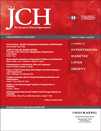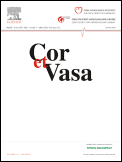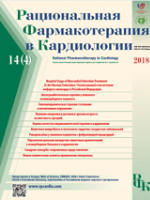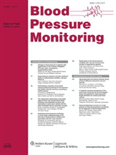
Integrated Blood Pressure Control
Scope & Guideline
Enhancing Patient Outcomes through Integrated Knowledge
Introduction
Aims and Scopes
- Hypertension Epidemiology:
Research on the prevalence, risk factors, and demographics of hypertension across different populations, emphasizing community-based studies. - Lifestyle and Behavioral Interventions:
Investigations into lifestyle modifications, including diet, exercise, and adherence to treatment, and their effectiveness in managing hypertension. - Pharmacological Treatments and Medication Adherence:
Studies evaluating the efficacy, safety, and adherence to medication regimens in hypertensive patients, including comparative studies of treatment protocols. - Comorbidities and Hypertension:
Exploration of the relationship between hypertension and other health conditions, such as diabetes, cardiovascular diseases, and infectious diseases. - Innovative Treatment Approaches:
Research into new therapeutic strategies and interventions for hypertension management, including technology-based interventions and surgical options. - Patient Perspectives and Healthcare Quality:
Qualitative studies assessing patient experiences, perceptions of healthcare quality, and barriers to effective hypertension management.
Trending and Emerging
- Community-Based Hypertension Studies:
An increasing number of studies focusing on the prevalence and management of hypertension in community settings, highlighting a shift towards grassroots health interventions. - Interdisciplinary Approaches to Hypertension:
Emergence of studies that integrate insights from various fields such as psychology, sociology, and pharmacology to address hypertension holistically. - Technology in Hypertension Management:
Growing interest in the use of digital health technologies and telemedicine for monitoring and managing hypertension, reflecting the need for innovative solutions in healthcare delivery. - Risk Factors Associated with Hypertension in Specific Populations:
A trend towards exploring hypertension in unique populations, such as those with specific comorbidities or in under-researched regions, emphasizing the importance of tailored healthcare approaches. - Patient Engagement and Self-Management:
Increasing focus on patient education, self-monitoring, and adherence strategies, recognizing the critical role of patients in managing their own health.
Declining or Waning
- Pediatric Hypertension:
Research specifically focusing on hypertension in pediatric populations has become less prominent, possibly due to a shift towards adult-centered studies and the increasing recognition of hypertension as a chronic condition primarily affecting adults. - Surgical Interventions for Hypertension:
There has been a noticeable decrease in studies examining surgical approaches to hypertension management, such as renal denervation, indicating a potential waning interest in this area. - Historical Data Analysis:
Fewer papers are being published that primarily analyze historical data or trends over extended periods, suggesting a shift towards more current, real-time studies and interventions.
Similar Journals

HYPERTENSION
Connecting clinicians and researchers in hypertension.HYPERTENSION, published by Lippincott Williams & Wilkins, is a preeminent journal in the field of cardiovascular medicine, focusing on the latest research, therapies, and clinical practices related to hypertension and its associated disorders. With a distinguished Q1 ranking in Internal Medicine and a commendable Scopus rank of #12 out of 167 in its category, it occupies a vital position within the academic community, appealing to researchers, clinicians, and educators alike. The journal has been disseminating impactful findings since 1979 and continues to influence the discourse on hypertension through rigorous peer-reviewed articles, reviews, and studies designed to elevate understanding and treatment of this prevalent condition. HYPERTENSION remains an essential resource for professionals keen on advancing their knowledge in this critical area of medicine, fostering innovations that ultimately improve patient care.

Journal of Clinical Hypertension
Bridging Gaps in Hypertension Understanding and CareJournal of Clinical Hypertension, published by WILEY, is a leading open-access journal focused on advancing the understanding and treatment of hypertension and related cardiovascular conditions. With an ISSN of 1524-6175 and an E-ISSN of 1751-7176, the journal provides a vital platform for researchers, healthcare professionals, and students alike to disseminate high-quality, peer-reviewed research. Since transitioning to open access in 2021, it has increased its reach and accessibility, ensuring critical information is available to a broader audience. The journal holds an impressive position in the Scopus ranks, nestled within the Q2 quartile across key disciplines including Cardiology and Cardiovascular Medicine, Endocrinology, Diabetes and Metabolism, and Internal Medicine, indicating a strong impact on the scientific community. With articles converging from 2001 to 2024, it not only highlights contemporary developments but also contributes to the ongoing dialogue in the field. Researchers are encouraged to submit their findings on hypertension, treatment methodologies, and epidemiology to further enhance the collective knowledge in this crucial area of health.

COR ET VASA
Bridging the gap between research and clinical practice in cardiology.COR ET VASA is a prominent peer-reviewed journal in the field of cardiology and cardiovascular medicine, published by the Czech Society of Cardiology and Czech Society of Cardiovascular Surgery. Established in 1961, and continuing its legacy from 2006 to 2024, this journal serves as an essential platform for disseminating significant research findings, clinical studies, and innovative treatments in cardiovascular health. While currently positioned in the Q4 quartile, the journal aims to enhance its impact by fostering knowledge sharing among researchers, clinicians, and students alike. The journal, with its publication in Czech Republic, provides a unique perspective to the European cardiovascular community, allowing for invaluable insights and discourse. Researchers are encouraged to submit their manuscripts and contribute to the growing body of knowledge in this critical area, although it should be noted that COR ET VASA does not offer open access options at this time. As the field of cardiovascular medicine evolves, COR ET VASA remains committed to addressing the latest challenges and advancements, nurturing a rich dialogue within the community.

Blood and Lymphatic Cancer-Targets and Therapy
Championing Open Access for Global Cancer ResearchBlood and Lymphatic Cancer-Targets and Therapy, published by DOVE MEDICAL PRESS LTD, is a vital open-access journal that has been disseminating crucial research and findings in the field of hematology and oncology since 2011. With its ISSN 1179-9889, this journal focuses on the latest therapeutic targets and innovative treatment strategies for blood and lymphatic cancers, contributing significantly to the advancement of knowledge and practice in this specialized area. Designed for researchers, healthcare professionals, and students alike, Blood and Lymphatic Cancer-Targets and Therapy aims to foster a deeper understanding of cancer biology and promote collaborative efforts leading to novel therapeutic interventions. The open-access model ensures that research findings are readily accessible to a global audience, underscoring the journal's commitment to enhancing patient care and fostering educational growth in the cancer domain.

Cardiovascular Journal of Africa
Transforming cardiovascular care through shared knowledge.Welcome to the Cardiovascular Journal of Africa, an esteemed publication dedicated to advancing the fields of Cardiology and Cardiovascular Medicine. Established in 1994 and published by CLINICS CARDIVE PUBL PTY LTD, this journal serves as a vital platform for researchers, practitioners, and students interested in innovative cardiovascular research and clinical practice within the African context and beyond. With a Q3 ranking in both relevant categories as of 2023, this journal contributes significantly to the growing corpus of medical literature. Although access is non-open, the journal features a diverse array of peer-reviewed articles that explore groundbreaking findings and practical applications in cardiovascular health, fostering knowledge exchange among professionals. Situated in South Africa, the Cardiovascular Journal of Africa is not just a repository of academic research; it is a cornerstone in the fight against cardiovascular diseases, addressing the unique challenges faced by populations across the continent.

Arterial Hypertension
Fostering collaboration in the fight against arterial hypertension.Arterial Hypertension is a dedicated Open Access journal published by VIA MEDICA, with the ISSN 2449-6170 and E-ISSN 2449-6162, focusing on the multidisciplinary field of cardiology, endocrinology, and internal medicine. Established in Poland, this journal has been providing researchers and healthcare professionals with accessible, high-quality content since its inception in 1999. With a commitment to advancing knowledge in the management and treatment of arterial hypertension, it publishes significant research findings, clinical trials, and reviews that contribute to improved health outcomes. Though classified in Q4 across various relevant categories, the continuous improvement in its content ensures its relevance in an evolving medical landscape. Designed to facilitate collaboration and innovation, Arterial Hypertension serves as a crucial resource for anyone invested in cardiovascular health, encouraging open dialogue and dissemination of vital research within the scientific community.

Cardiology Research and Practice
Transforming research into practice for better patient outcomes.Cardiology Research and Practice is a leading academic journal dedicated to advancing knowledge in the fields of cardiology and cardiovascular medicine. Published by HINDAWI LTD, this journal has been an inclusive platform for open access research since 2009, facilitating the dissemination of high-quality studies that contribute to the global scientific community. With an impact factor placing it in Q2 of its category in 2023, it underscores its importance in delivering innovative insights and discoveries that shape clinical practices and policies. The journal covers a broad scope of topics including, but not limited to, cardiovascular disease prevention, innovative treatment modalities, and emerging technologies, appealing to researchers, healthcare professionals, and students alike. Located in the United States with its international reach, Cardiology Research and Practice serves as a critical resource for those dedicated to improving patient outcomes and advancing the field of cardiology.

Rational Pharmacotherapy in Cardiology
Transforming Patient Outcomes with Innovative Pharmacotherapy ResearchRational Pharmacotherapy in Cardiology, published by the SOC CARDIOLOGY RUSSIAN FEDERATION, stands as a crucial platform for advancing knowledge in the field of cardiology and pharmacology. Established as an Open Access journal in 2005, it allows for unrestricted access to research findings, fostering collaboration among researchers, clinicians, and students. The journal, with its ISSN 1819-6446 and E-ISSN 2225-3653, focuses on the intersection of rational pharmacotherapy and cardiovascular medicine, aiming to enhance treatment strategies and patient outcomes through evidence-based studies. Though currently positioned in the Q4 category in both cardiology and pharmacology rankings, its ongoing commitment to rigorous peer review and scholarly research ensures its relevance and growth in the scientific community. With a unique address in Moscow, Russia, the journal seeks to serve as a valuable resource for those dedicated to improving cardiovascular health and therapeutic practices worldwide, making it an essential read for professionals keen on the latest trends and discoveries in this vital area of medicine.

Journal of Blood Medicine
Empowering Research: Your Gateway to Innovations in HematologyThe Journal of Blood Medicine, published by DOVE MEDICAL PRESS LTD, stands as a vital resource in the field of hematology, focusing on the latest research developments and clinical advancements in blood medicine. With an impact factor reflective of its growing relevance, this open-access journal has been delivering quality scholarly work since 2010, ensuring that critical research is readily available to the global scientific community. The journal operates under an open-access model, further enhancing its dissemination and accessibility to researchers, professionals, and students alike. In the 2023 rankings, it secured a Q3 category status within hematology and achieved a commendable 76th rank out of 137 in Scopus listings, indicating its commitment to quality and innovation in this specialized area. Located in New Zealand, the journal's diverse topics encompass clinical research, treatment modalities, and emerging therapies, contributing significant insights vital for shaping future advancements in blood medicine.

BLOOD PRESSURE MONITORING
Transforming blood pressure management practices.BLOOD PRESSURE MONITORING is a distinguished academic journal published by Lippincott Williams & Wilkins, dedicated to advancing the study of blood pressure measurement and management across various medical disciplines. With an ISSN of 1359-5237 and an E-ISSN of 1473-5725, this journal has consistently contributed to the field since its inception in 1996, continuing to provide invaluable insights through 2024. Notably, the journal ranks in the Q2 quartile for Advanced and Specialized Nursing and Assessment and Diagnosis, illustrating its influence in these areas, while also making significant contributions to Cardiology, Internal Medicine, and broader Medical research. Although it does not currently offer open access, BLOOD PRESSURE MONITORING remains essential reading for researchers, healthcare professionals, and students, eager to stay at the forefront of blood pressure research and its critical implications in clinical practice. The journal's commitment to quality and rigor makes it a vital resource for anyone involved in the continuously evolving fields of cardiovascular health and patient monitoring.